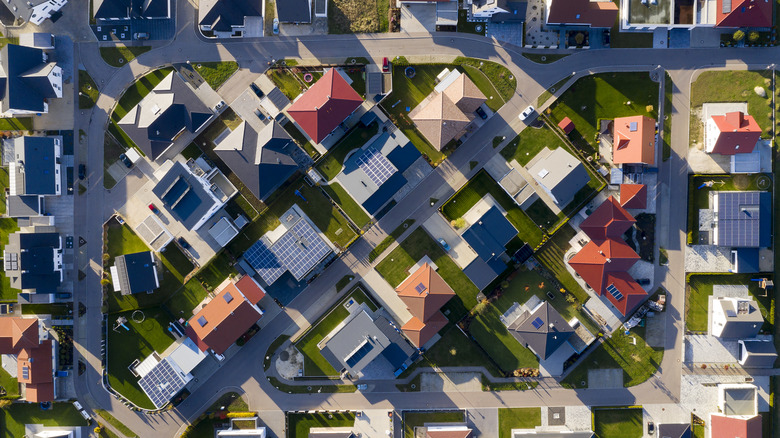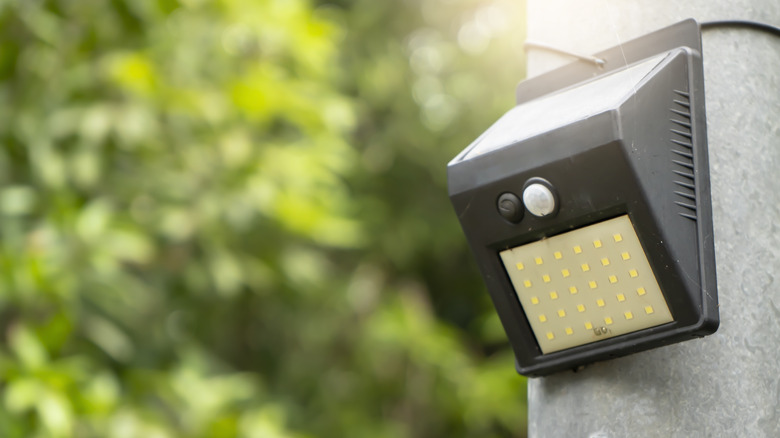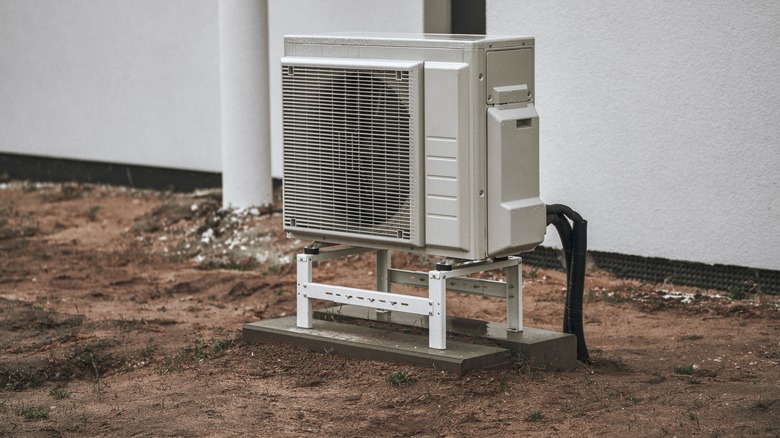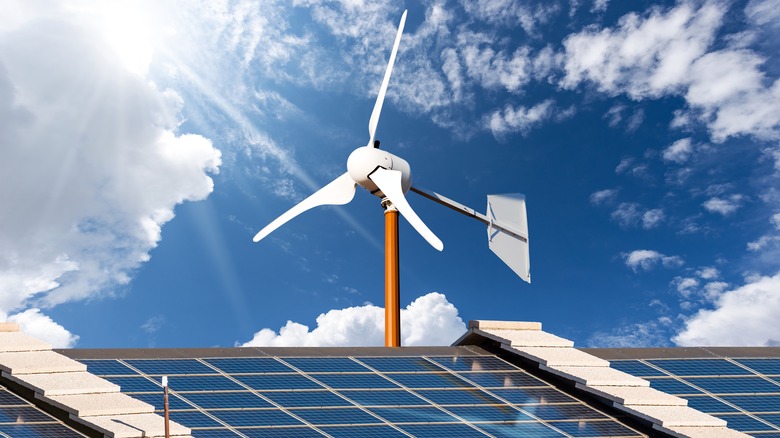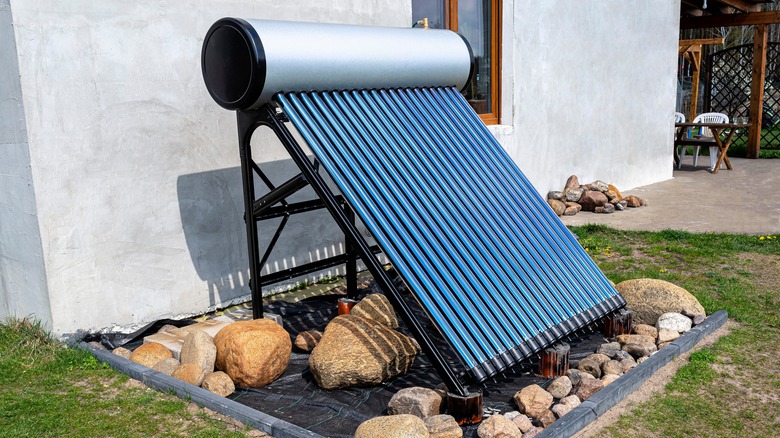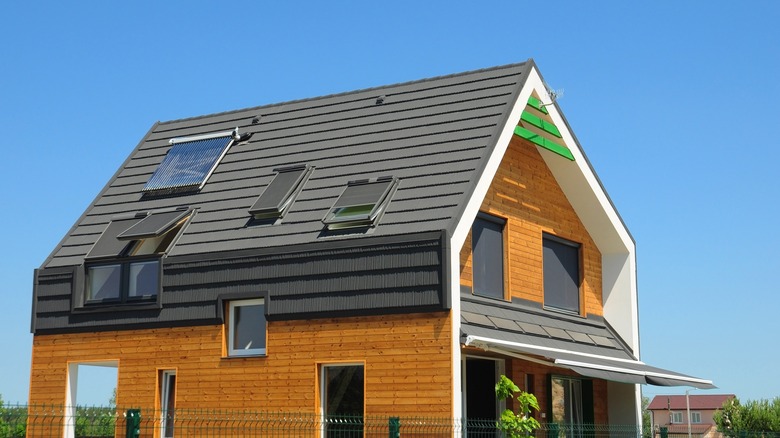Beyond Solar Panels: 3 Ways Renewable Energy Can Transform Your Home
When it comes to renewable energy at home, solar panels are often the first option that comes to mind, leaving homeowners with the choice between monocrystalline or polycrystalline solar panels, and the decision of where, exactly, to put them. In 2023, solar accounted for a reported three-quarters of renewable capacity, and many homeowners are keen to install solar panels in their homes. But if solar panels aren't a fit, there are a few other approachable options for utilizing renewable energy.
Since it's unlikely that a giant hydroelectric dam is going to fit on your property, many of the at-home renewable energy options are expectedly sourced from solar, though there are a few other options involving water and wind. The options depend on the nature of your property and what your neighbors will put up with, but they offer an incremental approach to renewable energy that can make quite a difference over time.
Solar lights
Solar lights are among the more useful and flexible options for renewable energy, and are a good way to eliminate the middleman if you're not quite ready for panels on the roof. A small solar panel with a light sensor and a battery can be placed virtually anywhere around your home where it can be charged with enough sun, and later will switch on at night to illuminate areas like porches, dim pathways, the front of the garage, corners of the yard, and even the inside of your home
Some of the lights can be affixed to the outside of the house, but others like path and garden lights can simply be placed in the ground. They require little to no upkeep, and just need to be placed in a spot where they can gather enough sun to sufficiently charge the battery, so they don't end up shutting off at some inopportune time when you really need them.
Geothermal heat pumps
Many homes use air-source heat pumps, which collect heat from the air outside one's home and transfers it inside, instead of using a combustion heating system. Where geothermal heat pumps differ is that they use the ground as a source to transfer heat in and out of the home. As the Department of Energy describes, the pumps use a heat exchanger to transfer heat from the more consistent temperature in the ground, and as a result, they need little maintenance and can last longer than air-source heat pumps. Depending on the amount of room on your property and the nature of the soil, a horizontal or vertical system may be ideal, with residential properties usually opting for the horizontal and commercial properties for vertical, though more options are available.
While the installation price can be significantly higher, the upfront costs are likely to be recouped in saving over the years, and the efficiency is high since the geothermal heat pumps are not relying on widely varying temperatures in the air. Air temperature can vary by more than 100 degrees over the course of a year, while the temperature in the upper 10 feet of earth tends to stay within a 30 degree band.
Wind turbines, but smaller
When we picture wind turbines, they're often towering behemoths found by the dozens on vast wind farms, and that kind of setup is not a fit for your average backyard. But smaller versions are available and can sometimes be a fit for a residential property, if there's room. Of course, there are numerous obstacles one immediately faces, including zoning regulations, land restrictions, and neighborly issues like noise and the view.
If none of these issues are a problem, a smaller wind turbine may be able to generate a good portion — or even all — of a home's energy needs. The Department of Energy suggests that a homeowner have at least one acre of land, and live in an area that gets a wind speed of at least 10 miles per hour. Generally speaking, the more wind, and the bigger the wind turbine, the more energy you'll harness. Residential turbines typically range from 60 to 140 feet high depending on their surroundings. A shorter wind turbine, however, can be mounted on a platform to capture more wind higher in the air. It won't be as peaceful or subtle as wind chimes, but will do much more to harness energy.
Solar water heater
It may look like a limited playground slide, but a solar water heaters can be an efficient way to use the sun's power to heat the water coming into your home. According to the U.S. Department of Energy, they do this using storage tanks and solar collectors, and generally come as an active system, which use pumps to circulate the water, and passive systems, which use gravity and natural convection to transfer the hot water into the house.
Active versions tend to be slightly more efficient than passive versions, and within this class, there are two options available. Direct circulation setups are ideal for climates where it rarely freezes, and use pumps to transfer the water, while the indirect circulation systems work well in climates that experience freezing temperatures, and use a non-freezing, heat-transfer fluid with a heat exchanger to do the same.
Passive solar water heaters can be less expensive and less efficient, but because of their less-complicated mechanisms, they can sometimes offer more durability. There are two types of passive solar water heaters: the integral collector-storage passive systems, which simply allows the sun to heat the water, at which point it flows into the household, and the thermosyphon systems, in which water is collected up on the roof and flows downward into the house when a faucet is turned.
Passive solar heating
As the word "passive" implies, this form of renewable energy is a simple, low-effort approach to retaining energy in your home. Its name describes it all: the process involves allowing the sun's rays to heat your home and then keeping that heat as well. According to the Department of Energy, taking advantage of passive solar heating can be a basic as making sure your windows get direct sunlight, and using heavy, insulated curtains to hold in that heat for the rest of the day. Depending on where you live and the house itself, this is unlikely to totally replace a heating system, but it can certainly supplement one.
Homes can be specifically designed for passive solar heating. This includes orienting windows to face within 30 degrees of true south; using thermal mass in the form of concrete, brick, stone, and tile to absorb heat from sunlight; and finally distributing that heat around the house using conduction, convection, and even sometimes fans. Going that route seems less than passive, but will certainly keep the house warm.
